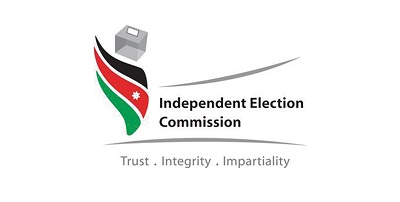3 Million Yemenis Added to List of Beneficiaries Receiving Food Assistance
Asharq Al-Awsat
Humanitarian organizations operating in Yemen have expanded the number of beneficiaries receiving monthly food assistance thanks to an increase of donor funding for this year’s Humanitarian Assistance plan.
In a factsheet, USAID Bureau for Humanitarian Assistance announced that with the expansion of assistance, the World Food Program (WFP) anticipates that more than 11 million people across Yemen will receive monthly food assistance between June and September, compared with approximately 8 million people in recent months.
The distribution of monthly food assistance includes the areas of Amran, Dhamar, Hajjah, Hodeidah, Jawf, Mahwit, Raymah, Saada, and Taiz governorates. However, vulnerable populations in six other governorates—Al Baydah, Ad Dalih, Ibb, Marib, and Sanaa—continue to receive assistance every other month.
According to USAID, food insecurity and malnutrition remain the primary drivers of humanitarian need in Yemen, with an estimated 16.2 million people likely experiencing crisis or worse levels of acute food insecurity.
It said that despite contributions from Gulf country donors, which have enabled WFP’s recent scale-up of emergency food assistance, and which will likely bolster food rations through late summer, WFP still requires an estimated additional $325 million to maintain the monthly beneficiary caseload through December.
The factsheet mentioned the renewed Houthi offensive on Marib city in mid-June, which it said constitutes some of the heaviest fighting in the area in 2021, and has resulted in increased civilian casualties and threatened further displacement.
“Conflict and natural hazards displaced nearly 41,000 people across Yemen, including approximately 16,200 individuals in Marib, from January 1 to July 3, according to the International Organization for Migration (IOM),” it said.
Also, the Agency stressed that in Houthi-controlled areas, fuel shortages continue to contribute to sharp increases in fuel prices, limiting access to essential services.
It said that mid-June, the Yemen Petroleum Company (YPC) raised the cost of approximately 5 gallons of gasoline to approximately 8,500 Yemeni riyals and the cost of 5 liters of gas oil to an estimated 7,900 riyals, representing increases of nearly 220 percent and 360 percent, respectively.
In government-held areas, fuel prices have increased due to high inflation and a depreciation of the riyal to a record low of 1,000 YER/$1 on July 11.
Concerning restrictions on the movement of humanitarian organizations, USAID said that following negotiations with relief actors, the Organizations’ Affairs Office (OAO) agreed to extend a temporary moratorium on its requirements for non-governmental organizations and UN agencies in Yemen’s west coast region to obtain movement permits from the office through the end of 2021.
Latest News
 Prime minister directs government to support IEC ahead of upcoming elections
Prime minister directs government to support IEC ahead of upcoming elections Parliamentary elections for 20th Lower House to be held on September 10 – IEC
Parliamentary elections for 20th Lower House to be held on September 10 – IEC Amman Chamber of Commerce says GDP grows by 4.4% in 2023
Amman Chamber of Commerce says GDP grows by 4.4% in 2023 King orders holding parliamentary elections in accordance with law, checks on electoral commission’s preparations
King orders holding parliamentary elections in accordance with law, checks on electoral commission’s preparations- N. Macedonia starts elections that could decide stalled EU talks
Most Read Articles
- Palestinian prime minister, Jordanian ambassador discuss humanitarian efforts in Palestine
- US president signs bill to provide new aid for Ukraine
- Prime minister directs government to support IEC ahead of upcoming elections
- Senate president, Rwanda’s ambassador discuss bilateral relations
- 'Sinwar Above Ground': Hamas official's revelation shocks Israeli Occupation
- Iran cuts Syria presence after strikes blamed on Israel —monitor
- US Supreme Court seems split on Idaho abortion ban
- Vaccines saved at least 154 million lives in 50 years — WHO
- Four dead as floods wreak havoc in Kenyan capital
- UAE announces $544m for repairs after record rains